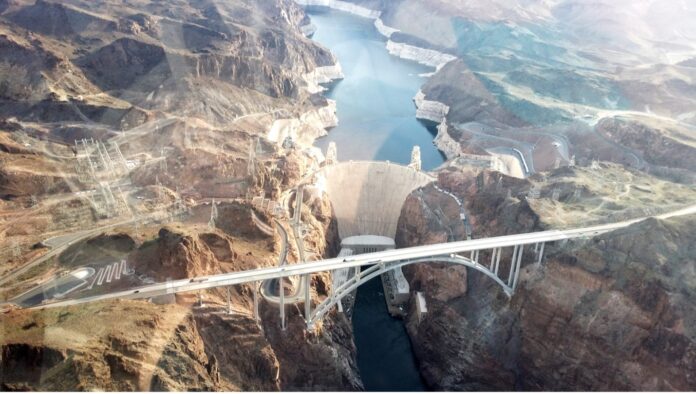
The Bureau of Reclamation announced its first ever water shortage on the Colorado River. This shortage marks the first of many water cutbacks for Nevada, Arizona and Mexico.
The scaling of the cutbacks varies by state, Arizona losing the most at 18 percent of its annual appointment, accounting for over 166 billion gallons of water. The cut to Arizona’s supply is projected to cause Arizonan farmers to face significant demand issues, according to AZ Central.
“The biggest recognition has to be that the policy that allocated the Colorado River in the first place was not based on good science,” UNLV paleoclimatology and climate scientist Dr. Matthew Lachniet said. “It allocated more water than what nature gives us in a general sense.”
Lachniet believes that, had someone listened to scientists from over 100 years ago, they would’ve realized that this was predicted.
Nevada is also facing cutbacks, losing seven percent of its annual allocation of six billion gallons of water
“The Southern Nevada Water Authority has done a very good job in reducing water demand through conservation,” UNLV civil engineering professor Sajjad Ahma said. “Currently, Nevada is not fully utilizing its annual allocation of 300,000 acre feet from the Colorado River.”
The tier one cutbacks are to be implemented by 2022, and it is important to note that California is not subject to the same mandatory water cuts during the tier one phase.
“I can tell you that the way that those agreements were written, is that the more senior water users, in this case would be primarily California, are not affected as much as the more junior partners which are in Nevada, California, and Arizona,” Lachniet said.
However, the Chairman of the Colorado River Board of California Peter Nelson reports that California will likely start to see cutbacks to their water supply by 2024, according to Desert Sun.
“The shortage is related to two main things,” Lachniet said. The first variable is that, “We have a decrease in the supply of water going into the Colorado River, and that is a result of a combination of a kind of natural climate variability, but also a human impact on climate change where the temperatures are becoming warmer and causing less water to be available to flow into the river.”
The other side of this equation is that the withdrawal of water is greater than the amount of water that’s being supplied by nature, according to Lachniet. The water is being used primarily for agricultural use, but also other industries use the water supply.
These cutbacks are initiating state-wide and city-wide policies that actively seek to reduce the consumption of unnecessary water. One of the newest policies being implemented in Vegas is what is being referred to as the “useless-turf,” a law that bans the use of grass in medians, along sidewalks, and in front of office and commercial buildings, according to the New York Times.
The Southern Nevada Water Authority demonstrated that the grass in and around Las Vegas uses 10 percent of Nevada’s share of water from the Colorado River, an amount that is significantly higher than the percent that is used by the Strip.
Restrictions on water stores aren’t the only concern of officials. If the water in the river drops another 100 feet, the turbines located inside the dam won’t be able to generate power at all.
“A 100 feet further drop from existing Lake water levels at 1067 feet will have a drastic impact on hydropower generation,” Ahma said. “If the lake dips below elevation 895 feet, the Hoover Dam will no longer be able to release water downstream to California, Arizona and Mexico.”
As noted by Ahma, only 23 percent of power generated at Hoover Dam is delivered to Nevada, which meets only about six percent of our total demand.
“The ability to generate electricity goes down as the water level goes down,” Lachniet said. “If the water level continues to go down below the intake level of the turbines, then there’s no more hydroelectric energy that can be produced.”
Lachniet believes that the policy and political discussions made it difficult to fully acknowledge the science. People who had to negotiate the sharing agreements, took an optimistic view of how much water would be available.
